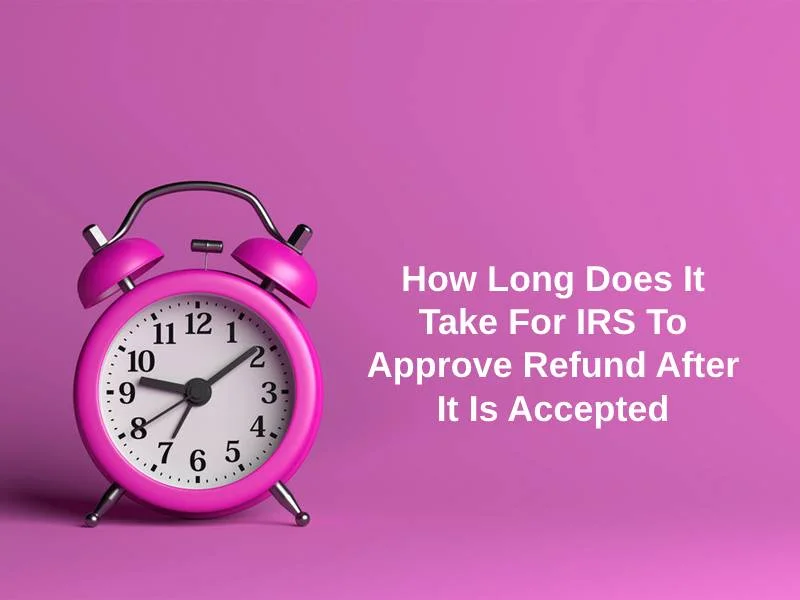Exact Answer: About 21 Days
The Internal Revenue Service (IRS) is the revenue service of the United States federal government. It is responsible for collecting taxes from U.S. citizens and administering the Internal Revenue Code. It is the main body of the federal statutory tax law.
The duties of the IRS include providing tax assistance to taxpayers, resolving instances of erroneous or fraudulent tax filings, approving tax refunds, and overseeing various benefit programs.

How Long Does It Take For IRS To Approve Refund After It Is Accepted?
If one files a complete and accurate paper tax return, then the refund is issued in about six to eight weeks from the date the IRS receives the return. However, if one files the return electronically which is most common these days, then the refund is issued in less than three weeks i.e. about 21 days, even faster when one chooses the direct deposit method.
Direct deposit, which is the fastest way of getting the refund is available only to those who e-file their returns. Direct deposit into a bank account is more secure because there is no check to get lost and also it takes the U.S. Treasury less time than issuing a paper check.
One can also check the status of their refund by calling the IRS TeleTax System if it has been at least four weeks since the filing of the return. Most refunds are issued in 21 days but it might take longer in certain cases. One can start checking the status of their refund within 24 hours after they have e-filed their return.
| Filing Method And Refund Delivery Method | Duration |
| E-file and direct deposit | 1 – 3 weeks |
| E-file and check | 1 month |
| Mail-in return and direct deposit | 3 weeks |
| Mail-in return and check | 2 months |
Why Does It Take So Long For The IRS To Approve Refund After It Is Accepted?
Numerous processes happen between the e-filing of tax returns and receiving the refund. Firstly, the tax return is stamped with an electronic postmark and sent to the government. It takes approximately 24 – 48 hours for the IRS to accept the tax return, provided it conforms with all the guidelines issued by IRS. In the timeframe of 24 – 48 hours, IRS does the work of checking the taxpayer’s personal information to make sure that it matches their records.
When all the details are proper and accurate, IRS accepts the return. As soon as it is accepted, the taxpayer is on the IRS payment timetable. It must be kept in mind that only IRS knows the status of processing the tax return, ensuring whether one owes the government taxes or are due for a refund. In prior years, the IRS issued more than 9 out of 10 refunds in less than 21 days.
Unfortunately, a 21 days delivery of the tax refund is not guaranteed. There are several factors including the choices one makes to file their tax return. The delivery option one chooses for the tax refund will affect how quickly can one claim their refund. According to IRS, the fastest way to receive the refund is to combine the direct deposit method with an electronically filed tax return
Refunds from IRS might get delayed due to a variety of reasons. Some of the reasons can be a difference in IRS records and name as well as the social security number listed on the tax return, negligence on behalf of taxpayers like failing to sign the return or to include necessary attachments such as wage and tax statement. The taxpayer could have also made some mathematical errors that require extra time for the IRS to rectify.
Conclusion
Several factors could slow down the processing of one’s tax refund, such as errors, incomplete returns, or fraud. One can check and track their refund progress through three stages: (1) Return Received, (2) Refund Approved, and (3) Refund Sent.
One must always remember that the fastest way to get the tax refund is to e-file the returns and choosing direct deposit as the refund delivery method. Whether one files a tax return electronically or on paper, direct deposit gives access to refund faster than a paper check as refunds that are directly deposited are not delayed for disaster and other weather-related events affecting delivery.